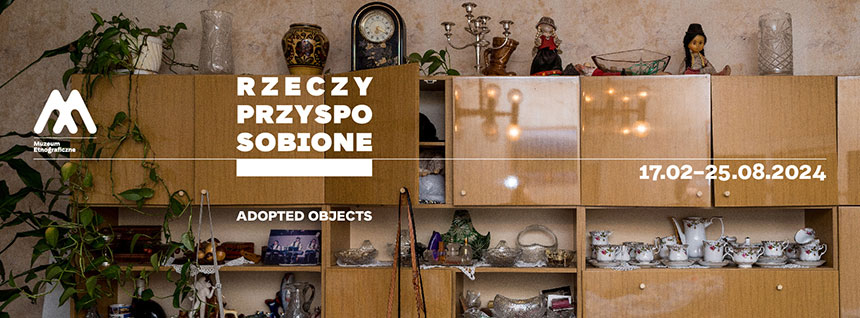Objects play a special role in multifarious narratives about the Western and Northern Territories that make up the discourse of the Recovered Territories.
They are meaningful props and metaphors useful in relating difficult stories. Keys, suitcases, coffers are symbolic of migration and relocation, of moving out and moving in. New layers of meanings specifically associated with the Recovered Territories have been added to the universal symbolism of the table: like in popular, if not necessarily true stories about Polish settlers finding still warm unconsumed meals left by fleeing German families on the table. The table may also symbolically mediate between and connect – across the divide of time and politics – those sitting around it before and after 1945. Such symbolic objects prominently feature in literary stories and museum exhibitions. One should be aware, though, that they may convey an oversimplified perspective on the postwar reality that was more complex. For example, the boxcar – a popular feature in the Recovered Territories discourse – suggests that all Polish settlers were forcibly deported from Poland’s former Easter Borderlands and arrived in groups in organized transports. In fact, the majority came individually from other Polish territories in search for better life.
Dining table
Tischfabrik Kurt Winkler in Finsterwalde, 1924
Katowice
courtesy of Łukasz Skąpski
Łukasz Skąpski has inherited the table from his aunt Anna Roga. It had belonged to the artist’s grandparents, Błażej and Zofia Roga – and he knows nothing about its earlier German owners. Błażej Roga was a chemistry professor in Warsaw who was dispatched to Upper Silesia to help reactivate the coal industry after the war and settled in Katowice (Kattowitz). “All furnishings in their [grandparents’] flat were of German provenance. It would have been different, I suppose, if not for a German bomb that hit their Warsaw flat during the Warsaw Uprising and unfortunately exploded destroying it completely, with all its contents. As a child, I would spend a lot of time at my grandparents, so the typical German household items we encountered working on this project in Wrocław and Szczecin, I had already known from my grandmother’s kitchen in Katowice. They were familiar and friendly. […] The table is the souvenir of my grandparents so I put a lot of effort – not very economically – to bring it to Szczecin” (Łukasz Skąpski). The table can be extended to over 3 meters and the whole family used to gather around it for the Christmas Eve supper which served using a dinner service and cutlery set for twenty four persons.
